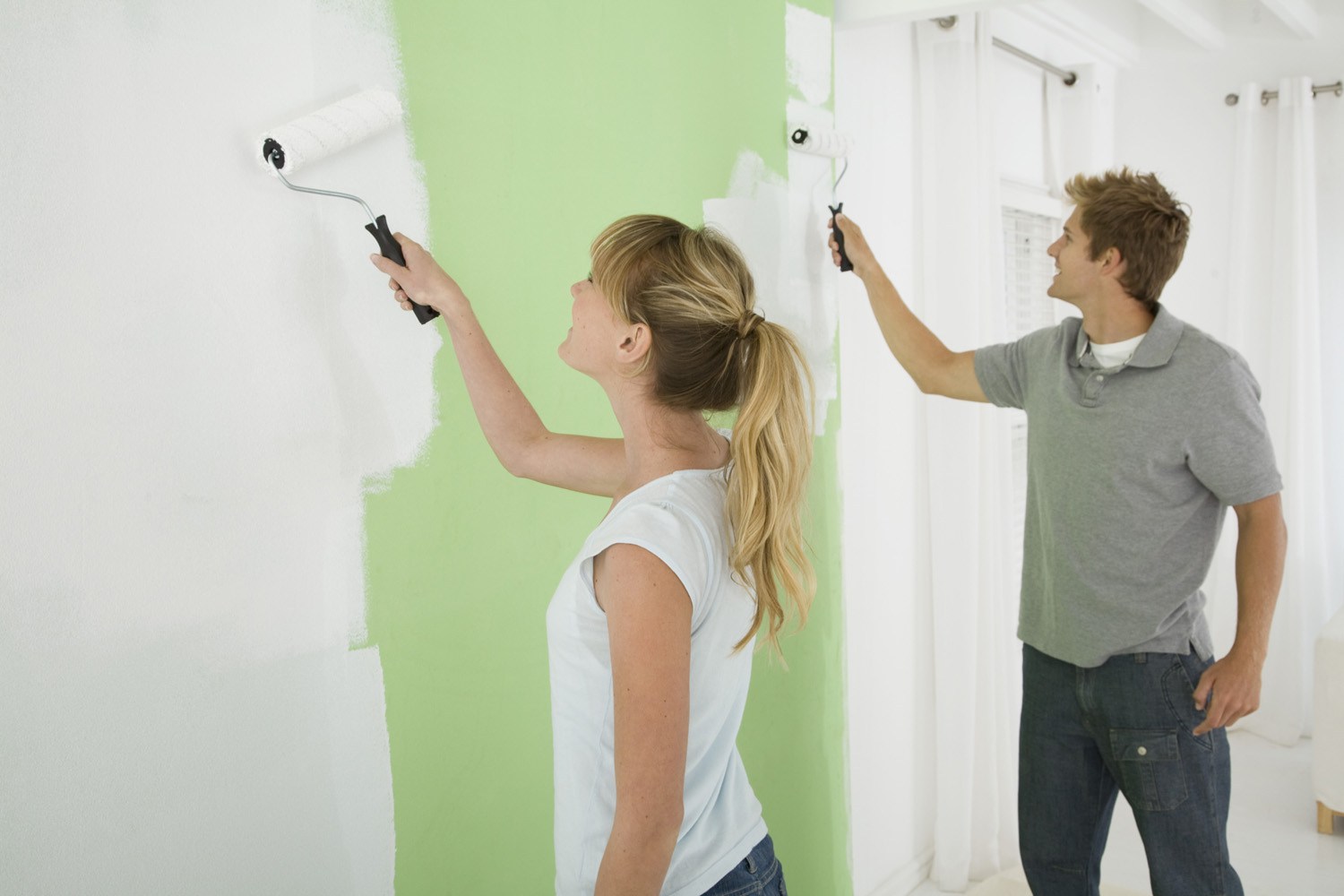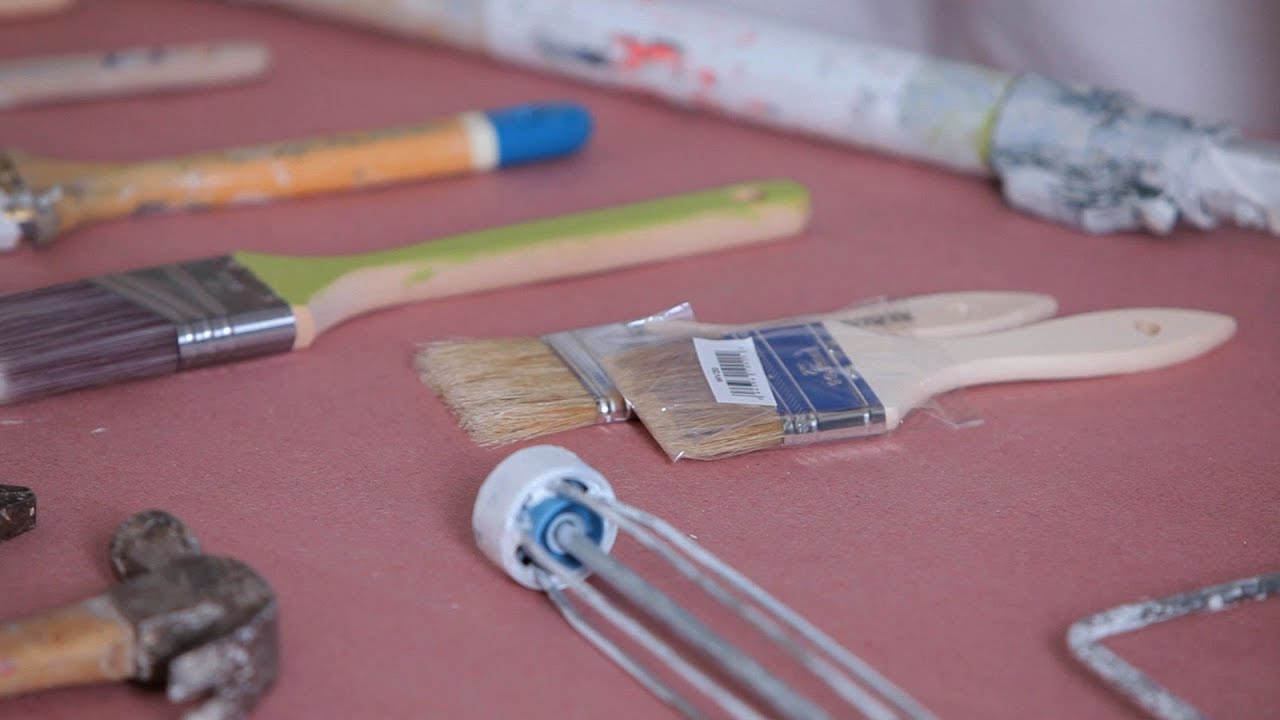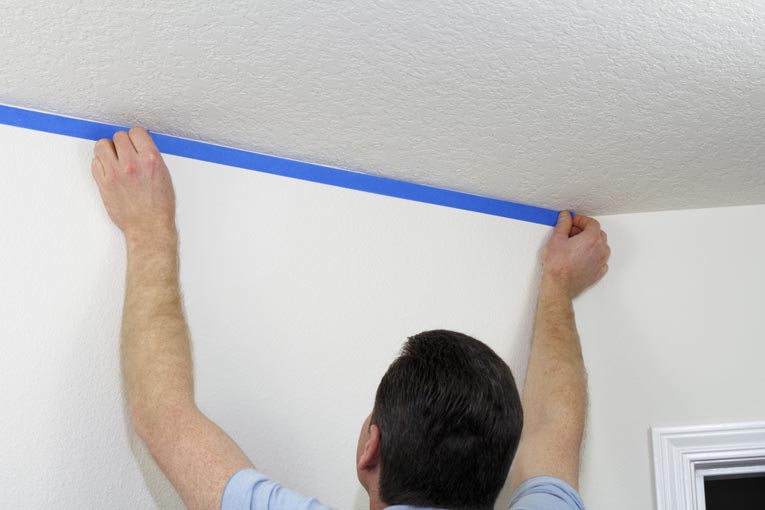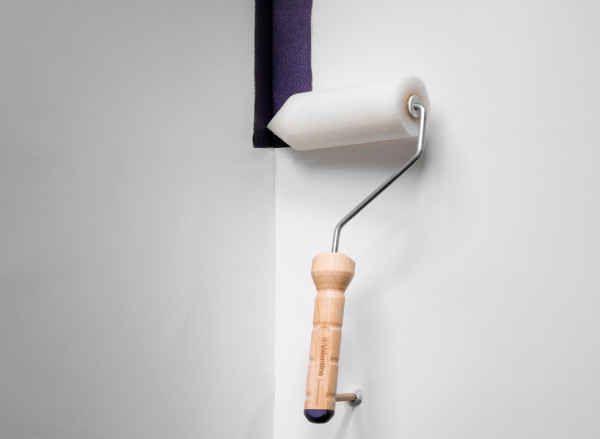
With only one layer of paint, we can completely transform the walls of our house, and that is why it is one of the most lucid improvements we can make ourselves. How to paint a wall yourself? To paint our walls we do not need to be professionals, but if we want to have a good result, there are some recommendations that it is better to follow. Dare to paint the walls of your home with this little guide.
How to paint a wall yourself?

Choosing the color can be the simplest or most complicated part of the process, but also the most interesting. Opt for a color that you like without leaving aside other considerations. You can use orange color in your living room as your behavior with natural or artificial light throughout the day. The size of the room and the effect it will have, or how it will coordinate with the rest of the decoration. Think also if you are going to paint all the walls completely. Partially, if you are going to paint the ceiling … The process of choice has to be meditating!
Then you will have to calculate how much paint you need depending on the performance of the particular product. Keep in mind if the paint is monolayer or not if the wall is smooth or textured (with the texture you’ll always need something else) and calculate the quantities upwards, so you do not run out of paint in the middle of the project.
Tools needed to paint

Some tools are optional, but it is not wrong to consider them before you start. Falling in that you have forgotten something in the middle of the process can be exasperating, so it is better to prepare everything well.
- Masking tape
- Paper and protective plastic
- Gloves
- Mask
- Appropriate clothing
- Rags
- Brushes to trim
- Lija
- Primer
- Clean water
- Roller and extension
- Bucket
- Brushes
- Stepladder
Protection of surfaces before painting the walls

The emptier a room is, the better it is to paint it. We will start by removing all the furniture, curtains and protect the parts that we do not want to paint. If you can not remove furniture for lack of space, move them to the center of the room and cover them well. The bodybuilder’s tape and the kraft paper are our allies, although we can also use plastic as a cover. Skirting boards, floor, door frames, and windows have to be covered to avoid stains and splashes. We will also remove the plugs from the plugs and cover the hole with bodybuilder tape. We will do the same with the drawers of the blinds and tapes. And it fixes the protection of the ground very well to avoid slips. Better safe than sorry!
Repair of the walls

The preparation is very important to achieve a good result. With the smooth walls, the flaws are more striking, so before painting, it is necessary to caulk blows and fill in possible holes. When the putty dries, we will pass fine grain sandpaper to even out the entire wall. If we want to paint on a wall with gotelé, we will also check and fix any chipping or damage with putty or special spray to repair gotelé. When we have repaired and sanded, we will clean the wall to remove all traces of dust and let it dry.
The primer is a coating that helps us prepare the surface for subsequent painting and improves the grip of it. If we paint the walls for the first time, the primer will help us to seal the porosity of the plaster, avoid the appearance of stains and improve later results. Also if we go from a very light to a dark color or vice versa, the primer will save us having to give more layers of paint. If we are going to paint on a wall in good condition and we only want to modify the color slightly, we can skip this step. Always check the paint manufacturer’s instructions to choose the correct primer and recommendations for applying it.
Trim the corners

The next step is to cut corners with a brush or palette as if we were framing the wall we want to paint. This step will facilitate us later to work with the roller since we will not have to get so close to the edges. If you have chosen to paint skirting boards or cornices of different colors, you will have to paint them with a palette, but you can leave them after painting the large areas of the walls. Work carefully and remember that you will get a better finish with thin layers and without accumulations of paint.
Paint large surfaces

When you have finished trimming, it is time to cover the large surfaces with the help of a roller. If you also want to paint the roof, start with it and use an extension to arrive comfortably. Pre-wet the roller to avoid overloading with paint (with water or solvent according to the paint). For both the walls and the ceiling, distribute the paint with the roller with movements from top to bottom and from bottom to top, with a thin layer, until they are covered. Refill the roller when necessary and if the paint is not a monolayer, let it dry well before applying the next coat. It will always be preferable to apply 2 thin layers than a thick one, as it will be smoother. Remember that the drops of paint or cherrystones will be accentuated with each layer of coating,
After painting the walls
You have finished painting, and we have to wait for it to dry. While you wait, you can clean the tools and remove the guards carefully and the bodybuilder’s tape. It is best to remove it before it dries the paint completely so that it does not rise at the edges. Leave the windows open or place a fan if necessary for the air to circulate. Consult the instructions of the painting to know when it will be completely dry before replacing pictures, curtains or furniture … and enjoy the new color of your walls!






